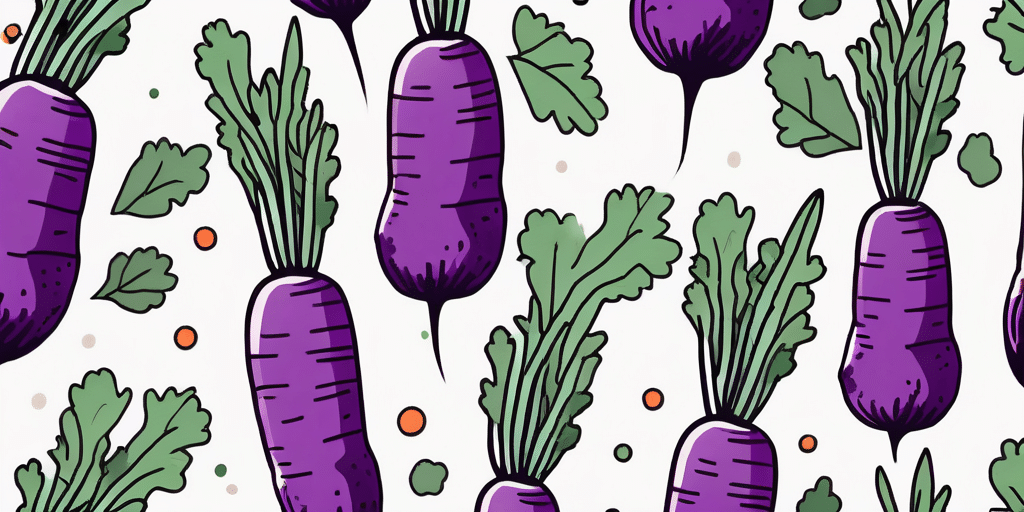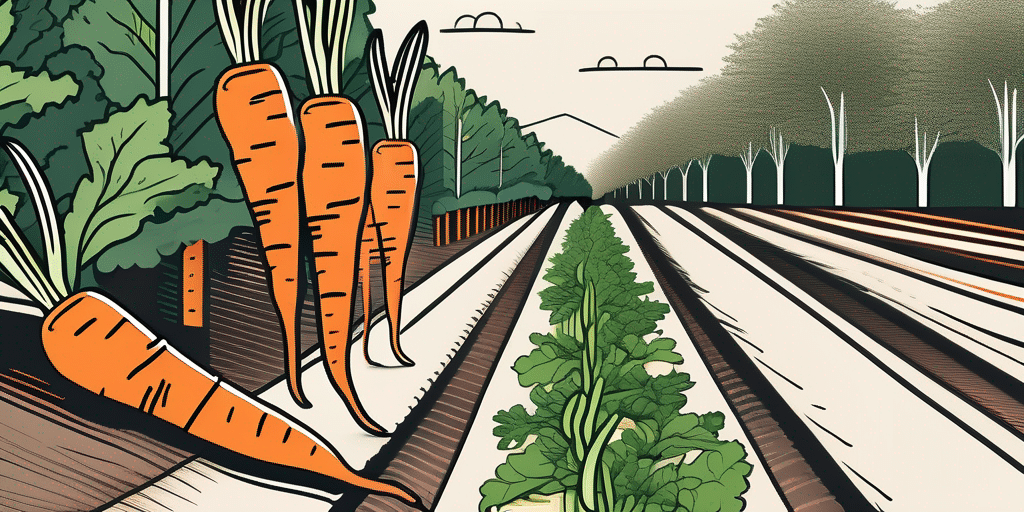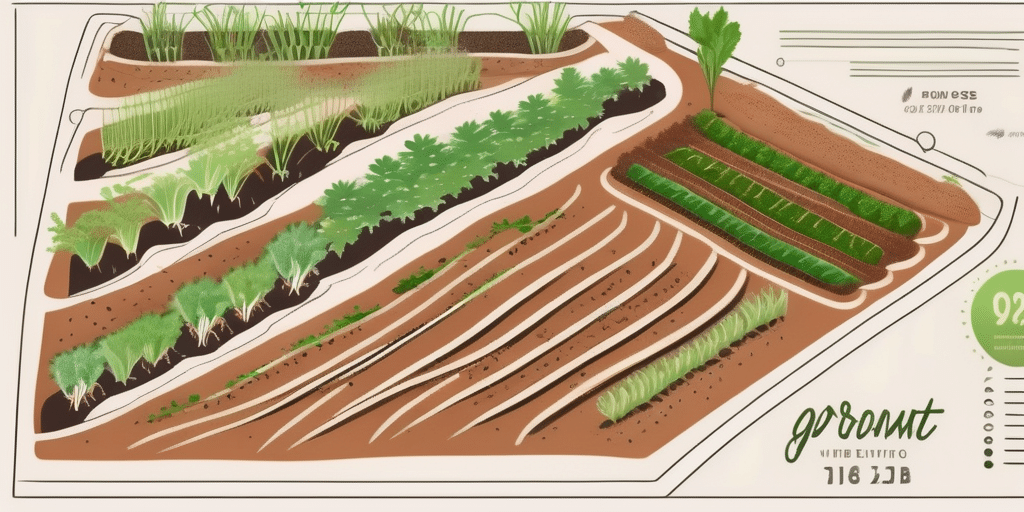Are you looking to grow delicious and nutritious carrots in Ohio? Well, you’ve come to the right place! In this article, we will cover everything you need to know about planting and growing carrots in the state known for its fertile soil. From choosing the best carrot varieties to understanding Ohio’s climate and hardiness zones, we’ve got you covered. Let’s get started!
Best Carrot Varieties for Ohio
When selecting carrot varieties to grow in Ohio, it’s essential to consider the region’s unique climate, which can range from colder conditions in the north to warmer temperatures in the south. Ohio’s climate is characterized by four distinct seasons, with cold winters and warm summers. The state’s diverse geography, including the Appalachian Plateau in the east and the Great Lakes region in the north, provides a variety of microclimates for carrot cultivation.
Here are some fantastic carrot varieties that are well-suited for Ohio:
- Scarlet Nantes: This classic orange carrot is known for its sweet and crunchy flavor, making it a popular choice among gardeners. Scarlet Nantes carrots thrive in well-drained, loose soil and are resistant to splitting.
- Chantenay Red Core: These carrots have broad shoulders and a vibrant red-orange color. They are excellent for growing in heavy soils, making them a great choice for Ohio gardeners dealing with clay-rich earth. Chantenay Red Core carrots are also known for their excellent storage capabilities.
- Thumbelina: If you have limited space or prefer smaller carrots, Thumbelina is a great option. These round carrots boast a sweet flavor and are perfect for containers or raised beds. Their petite size makes them ideal for succession planting throughout the growing season.
- Dragon: For those looking for a unique option, Dragon carrots have a rich purple color and retain their hue even after cooking. They also contain high levels of antioxidants, making them not only visually striking but also nutritious additions to your diet. Dragon carrots perform well in Ohio’s cooler spring and fall temperatures.
Now that you have a few carrot varieties to choose from let’s dive into Ohio’s climate and hardiness zones to ensure successful growth.
Ohio falls within USDA hardiness zones 5 and 6, with average annual minimum temperatures ranging from -20°F to 0°F. Carrots are cool-season vegetables that prefer temperatures between 60°F and 70°F for optimal growth. In Ohio, planting carrots in early spring or late summer can help avoid the heat of midsummer, which can cause them to become woody or bitter. Consider using row covers or mulching to protect young carrot seedlings from late frosts in the spring.
Climate & Hardiness Zones in Ohio
Ohio’s climate is classified as humid continental, meaning it experiences four distinct seasons. This diverse climate offers a range of opportunities for gardening and agriculture throughout the state. Understanding your specific hardiness zone will help you determine the most suitable planting and harvesting times for a variety of crops, including the beloved carrot. The USDA has divided Ohio into four main hardiness zones, each with its own unique characteristics and challenges.
- Zone 5: This zone covers the northernmost part of Ohio, where temperatures can drop to -15°F (-26°C) in winter. Gardeners in this zone need to be prepared for harsh winter conditions and select cold-hardy crops like carrots that can withstand such extreme temperatures.
- Zone 6: Central and southern Ohio fall into this zone, where winter temperatures typically range from -5°F to 0°F (-20°C to -18°C). Carrots thrive in this zone with proper care and attention to soil quality and moisture levels.
- Zone 6b: This smaller zone is located along Ohio’s southern border, where winter lows range from 0°F to 5°F (-18°C to -15°C). Gardeners in this zone can enjoy a slightly longer growing season compared to the northern regions, allowing for multiple plantings of carrots throughout the year.
- Zone 7: The southwestern corner of the state enjoys a milder climate, with winter temperatures staying above 0°F (-18°C). Carrots can be grown almost year-round in this zone with proper protection during the coldest months, offering a longer harvest window for gardeners.
Knowing your hardiness zone is crucial as it helps determine the best time to plant and harvest not only carrots but a variety of other crops in Ohio. By understanding the unique climate challenges and opportunities in each zone, gardeners can make informed decisions to maximize their yields and enjoy a successful growing season.
When to Plant Carrots in Ohio
Timing is crucial when it comes to planting carrots in Ohio. You want to ensure that the soil temperature is ideal for germination and root development. Aim to plant your carrot seeds about two weeks before your last average frost date, typically in early spring. For each specific hardiness zone, here are the recommended planting times:
- Zone 5: Mid-April through early May
- Zone 6: Late March through early April
- Zone 6b: Late March through early April
- Zone 7: Mid-March through April
Before planting, make sure the soil has thawed and is workable. Carrots prefer loose, well-draining soil, so it’s beneficial to prepare the bed by loosening it and removing any rocks or debris. Now, let’s move on to the exciting part—planting your carrot seeds!
When to Harvest or Pick Carrots in Ohio
After patiently caring for your carrot crop, it’s time to enjoy the rewards of your hard work. But when is the best time to harvest or pick your carrots? Unfortunately, there is no exact answer, as it depends on the variety you planted and personal preference. However, there are a few signs to look for to determine if your carrots are ready for harvest:
- Size: Carrots are usually ready to harvest when they reach their mature size. Refer to the specific variety’s seed packet or catalog for the expected size.
- Color: Most carrot varieties have their traditional orange color when fully mature, but always refer to the variety information for any unique colors.
- Looseness: Mature carrots should be easily pulled from the ground without much effort.
Keep in mind that you can harvest baby carrots earlier if you prefer a smaller size. Just be sure to thin them out properly to allow remaining carrots enough space to grow. It’s also important to note that fall-harvested carrots tend to be the sweetest, as cooler temperatures can enhance their flavor.
Frequently Asked Questions
Now that we’ve covered the essentials of planting and growing carrots in Ohio let’s address some common questions that gardeners often have:
- Can I grow carrots in containers?
Yes, you can! Carrots can be successfully grown in containers or raised beds as long as they meet the requirements for proper drainage and depth.
- How often should I water my carrots?
Carrots need consistent moisture, so aim to provide them with about an inch of water per week through either rainfall or irrigation.
- Are there any pests or diseases I should watch out for?
Carrots are generally less prone to pests and diseases. However, you should keep an eye out for carrot fly, carrot rust fly, and diseases such as root rot or leaf blight.
- Can I save carrot seeds for future planting?
Yes, you can harvest and save carrot seeds for future planting. Allow a few plants to bolt and go to seed, then collect the dried seed heads and store them in a cool, dry place.
Remember, successful carrot gardening in Ohio begins with selecting the right varieties, understanding your hardiness zone, and following proper planting and harvesting techniques. Now, armed with this knowledge, it’s time to get your hands dirty and start growing your very own carrots in the Buckeye State. Happy gardening!
Join the How to Grow Everything Community
Ready to turn your carrot-growing aspirations into a bountiful reality? Subscribe for free to How to Grow Everything and learn how to build the garden of your dreams! Receive personalized gardening advice tailored to your Ohio grow zone, experience level, and interests. Our family is dedicated to helping you grow, with the best gardening tips and special offers delivered straight to your inbox—100% free, no spam, just pure gardening gold. Start your journey to a greener tomorrow with us today!






